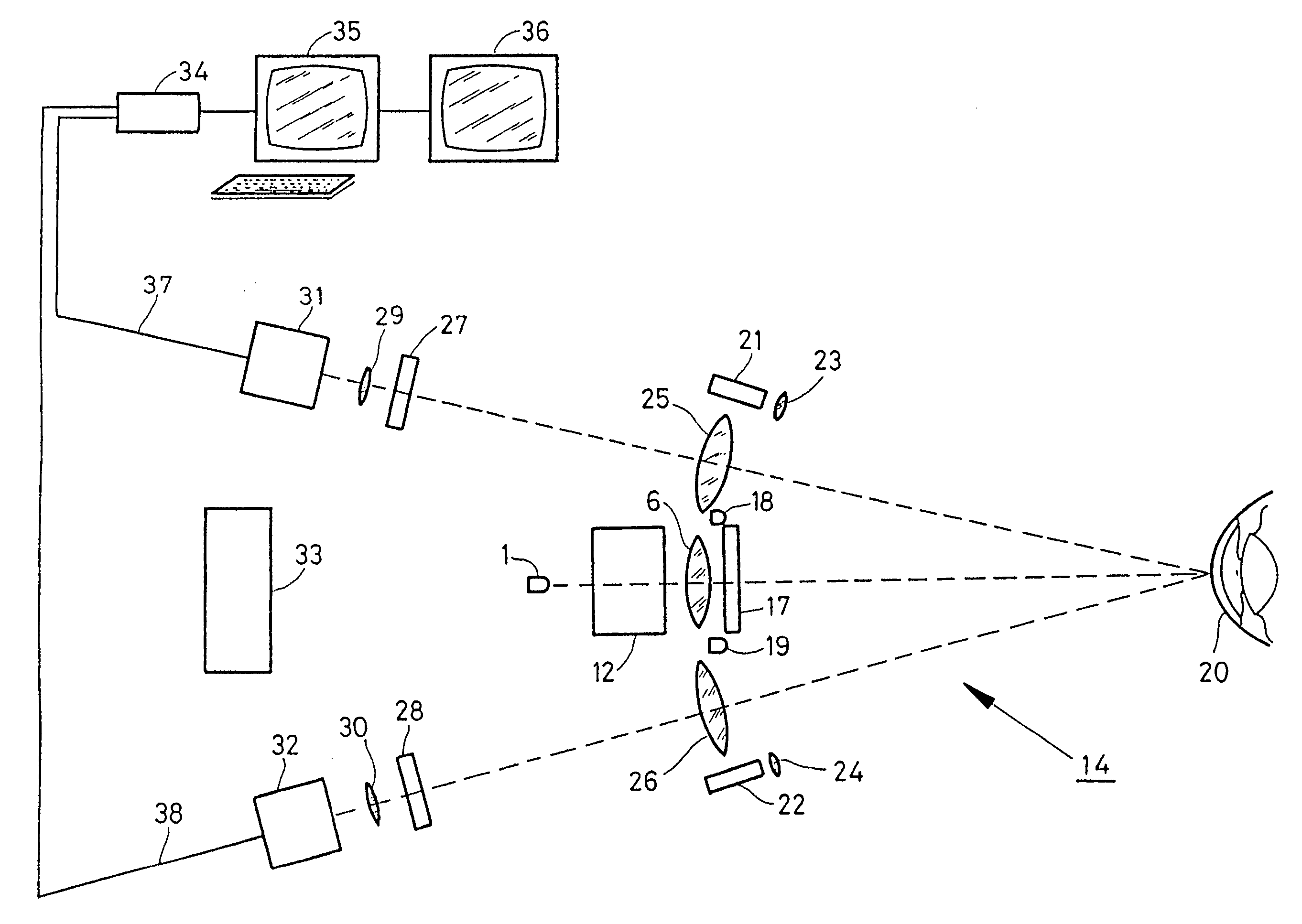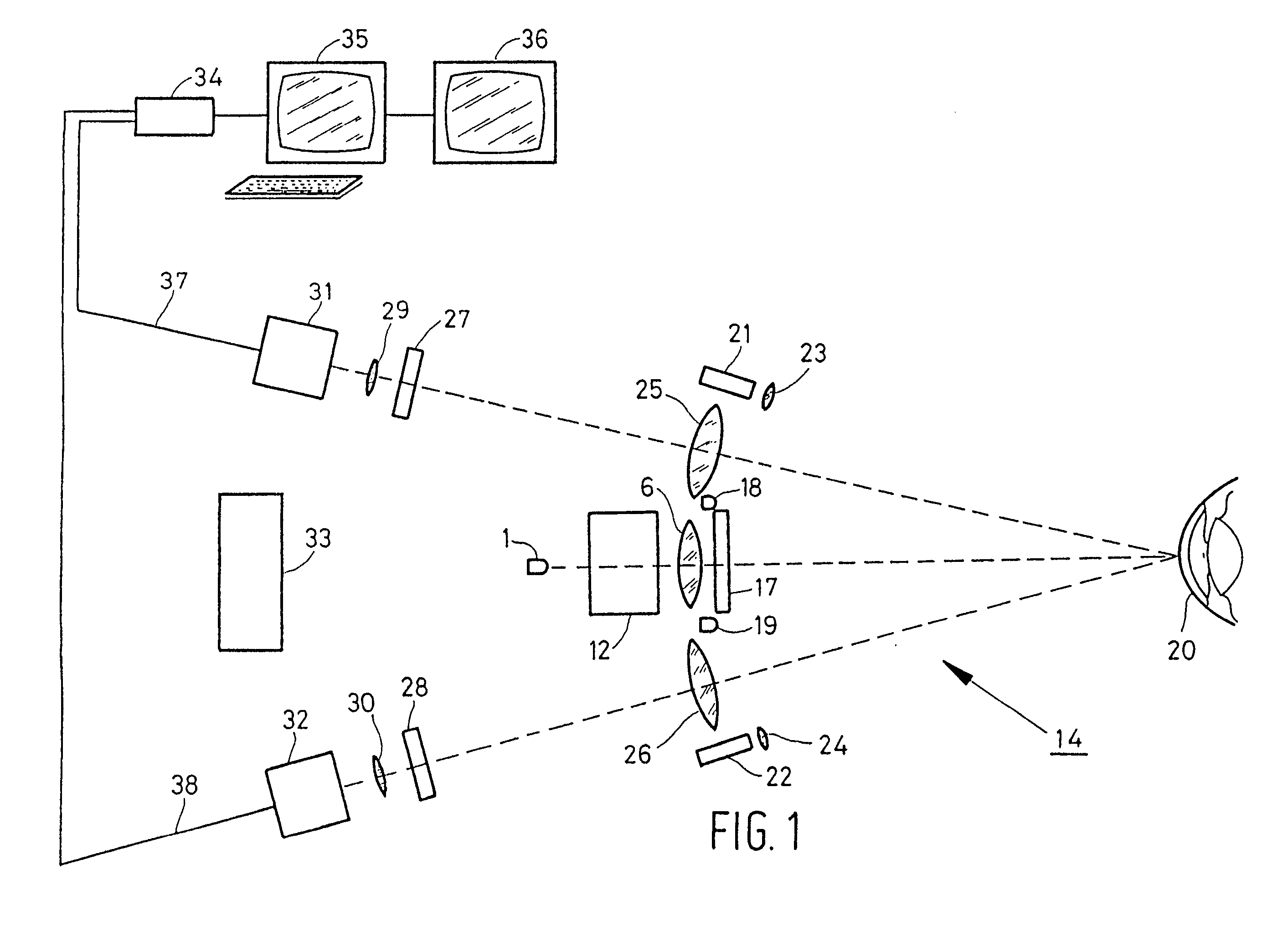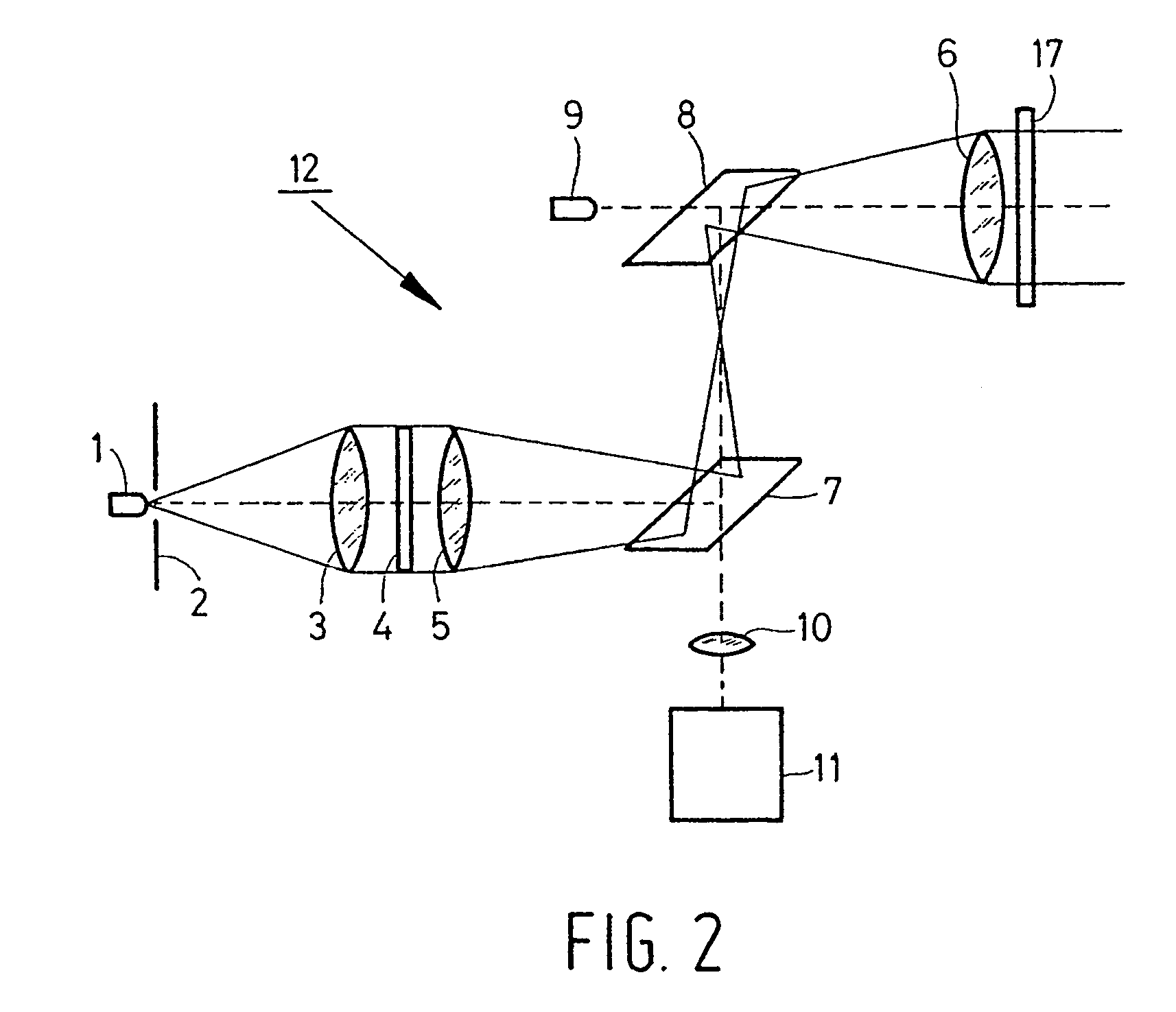Method and arrangement for performing measurements of the topography of a surface by means of a thermal emission from the surface
a topography and thermal emission technology, applied in the field of performing the topography of the surface, can solve the problems of difficult to see references, marginally invasive, and greatly reduced accuracy, and achieve the effect of reducing the chance of disturbing the measurement results
- Summary
- Abstract
- Description
- Claims
- Application Information
AI Technical Summary
Benefits of technology
Problems solved by technology
Method used
Image
Examples
Embodiment Construction
[0043] An arrangement 14 according to the present invention is shown in FIGS. 1 and 2. The arrangement has three main functions: projection of a line pattern on the corneal surface 20, triangulation focussing, and visualisation of references by using ambient light sources 18 and 19. FIG. 1 shows a schematic top view-of the arrangement, and FIG. 2 shows a side view of the projection unit generally indicated as 12.
[0044] Projection on the surface is performed by generating a line pattern projection through light source 1, aperture 2, lens 3, grid 4, telecentric lens 5, (dichroic) mirrors 7 and 8, and telecentric lens 6. The image leaving telecentric lens 6 is projected onto the corneal surface 20. The diffuse image of the grid 4 on the corneal surface 20 is picked up through telecentric lenses 25 and 26, filters 27 and 28, telecentric lenses 29 and 30 and cameras 31 and 32. The signal of cameras 31 and 32 is transmitted via lines 37 and 38 to frame grabber 34 and further processed by...
PUM
 Login to View More
Login to View More Abstract
Description
Claims
Application Information
 Login to View More
Login to View More - R&D
- Intellectual Property
- Life Sciences
- Materials
- Tech Scout
- Unparalleled Data Quality
- Higher Quality Content
- 60% Fewer Hallucinations
Browse by: Latest US Patents, China's latest patents, Technical Efficacy Thesaurus, Application Domain, Technology Topic, Popular Technical Reports.
© 2025 PatSnap. All rights reserved.Legal|Privacy policy|Modern Slavery Act Transparency Statement|Sitemap|About US| Contact US: help@patsnap.com



